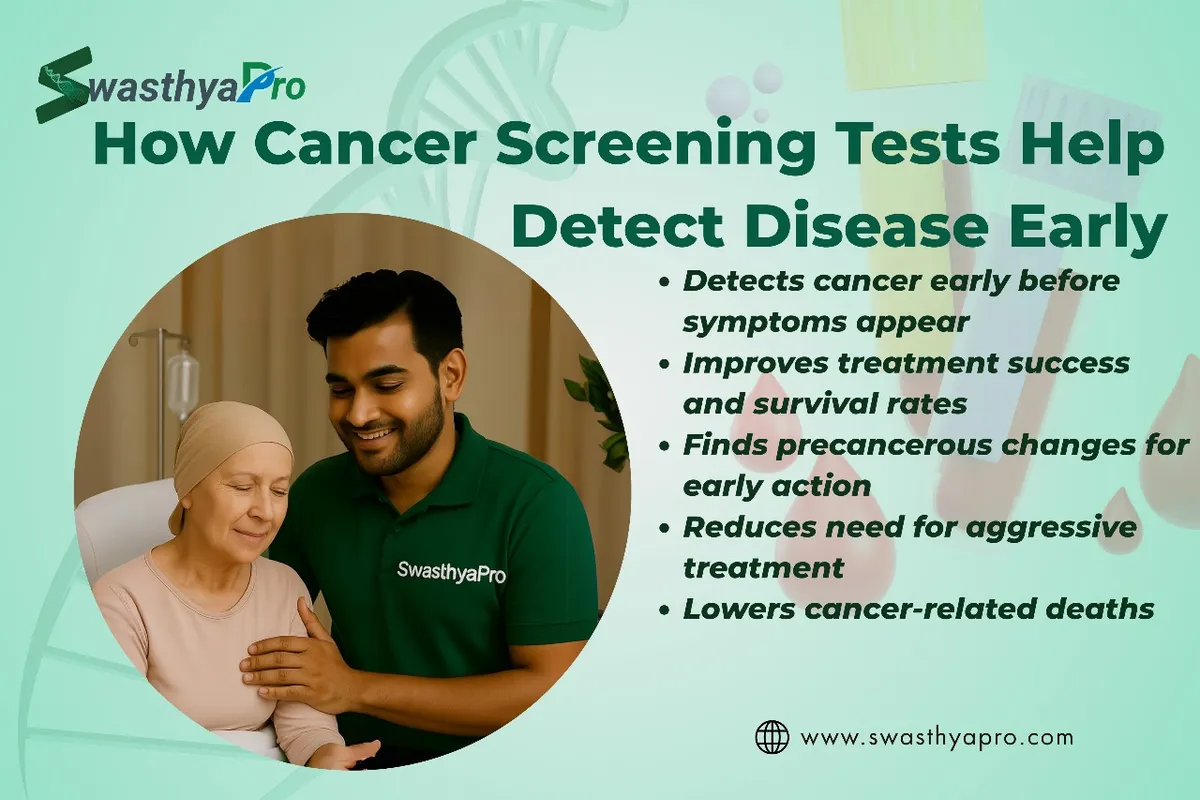Is the cancer screening test painful? here’s what the procedure really feels like

The idea of a cancer screening test makes many people nervous. Not because they doubt its importance — but because they fear it might hurt, feel awkward, or reveal something scary. That fear, unfortunately, keeps many from going for their checkups.
But let’s set the record straight: most cancer screening test procedures are either painless or cause only mild, temporary discomfort. The peace of mind they provide far outweighs any short-term unease.
Let’s break down what each cancer screening test actually feels like — so you know exactly what to expect.
Mammogram (Breast Cancer Test)
A mammogram is a cancer screening test used to detect breast cancer in women, typically after age 40. It involves placing each breast between two plates of an X-ray machine to take images.
Does it hurt?
You may feel pressure or a little discomfort as the breast is compressed. It’s not painful for most women, but it can be slightly uncomfortable for a few seconds. The whole test takes about 10–15 minutes.
Pap Smear (Cervical Cancer Test)
This cancer screening test checks for abnormal cells in the cervix that could turn into cancer. It’s usually done during a pelvic exam at a gynecologist’s office.
Does it hurt?
No. It might feel slightly weird or a little crampy when the sample is taken, but it's not painful. The test is quick — usually under 5 minutes — and most women say it feels more awkward than painful.
PSA Blood Test (Prostate Cancer)
For men, the PSA blood test is a routine cancer screening test to check for prostate cancer risk.
Does it hurt?
No more than any other blood test. A small needle is used to draw blood from your arm — quick, simple, and barely noticeable.
Colonoscopy (Colorectal Cancer)
This cancer screening test involves a flexible tube with a camera inserted into the colon to look for growths or signs of cancer.
Does it hurt?
The procedure itself is done under sedation or anesthesia, so you won’t feel anything. The prep — drinking a solution to empty your bowels — can be uncomfortable, but not painful. After the test, you might feel a bit gassy or bloated for a few hours.
Stool-Based Tests (Colon Cancer Alternative)
For those avoiding colonoscopy, stool-based tests like FIT or gFOBT are simple cancer screening tests that you can do at home.
Does it hurt?
Not at all. You collect a small stool sample and send it to the lab. It’s completely non-invasive and painless.
Low-Dose CT scan (Lung Cancer)
This cancer screening test is for smokers or ex-smokers, typically after age 50. It involves lying down in a CT scanner while it takes detailed images of your lungs.
Does it hurt?
Not at all. It’s just like a regular scan — no needles, no pain. It usually takes 5 to 10 minutes.
CA-125 Test & Transvaginal Ultrasound (Ovarian Cancer)
These tests are used when checking for ovarian cancer risks. CA-125 is a blood test, and the ultrasound involves a small probe inserted into the vagina.
Does it hurt?
The blood test is painless. The ultrasound may feel slightly uncomfortable, especially if it’s your first time, but it’s generally tolerable and quick.
Overall: What You Should Know
A cancer screening test isn’t designed to hurt you — it’s designed to protect you. Most of them are quick, low-pain, and done in minutes. The fear of pain often comes from not knowing what will happen. But once people go through it, they usually say, “That was easier than I thought.”
If you’re still unsure, talk to your doctor before scheduling your cancer screening test. They’ll explain each step, answer your concerns, and help make the experience smoother and less stressful.
Final words
Don’t let the fear of a moment stop you from protecting your whole life. A cancer screening test might bring a little discomfort — but it also brings clarity, relief, and power over your health.
Take the test. Face the fear. It’s almost never as painful as you imagine — and it could save your life.